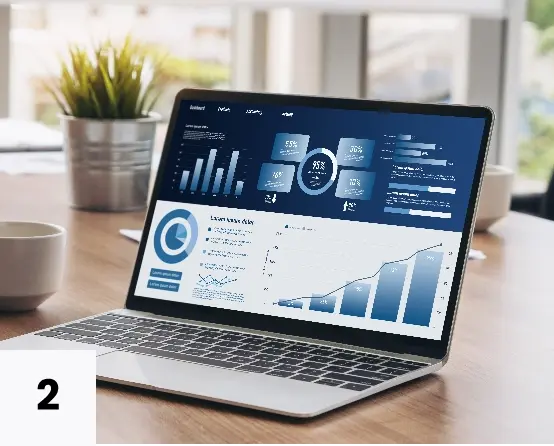SOLUTIONS
Healthcare Integration by PartnerLinQ
Composable Integration for the Next Generation Health IT.

Unify Clinical and Administrative Data with a Compliant Integration Backbone
Fragmented patient data, complex regulatory standards (HIPAA/HITECH), and slow claims processing create massive administrative costs and compromise patient care. PartnerLinQ eliminates this complexity with a unified, AI agent-led platform that ensures secure, near real-time interoperability across your entire health network.
Our solution seamlessly integrates clinical systems (EMR/EHR) with external partners (Payers/Labs), providing a compliant, scalable, and resilient digital foundation for modern healthcare delivery.
PartnerLinQ delivers on this vision through four core capability pillars:

End-to-End
Connectivity
Integrates end points of your EMR/HER, LIS/RIS, and billing systems with external parties supporting both legacy and modern standards to achieve end-to-end connectivity.

Agentic AI
Built-in platform AI agents (LinQ.IQ) automate setup of complex message interchange, validation and detection of anomalies in healthcare data flow.

Composable Connectivity
Integration flows for standards like HL7 or X12 are reusable assets, accelerating the setup of new clinics, partners, or regulatory requirements.

Real-Time
Visibility
Intuitive monitoring tools provide operational visibility into data throughput.
Features & Capabilities
PartnerLinQ provides the specialized tools and compliance features necessary to navigate the complex world of healthcare data exchange.
Clinical Data Exchange: Full support for HL7 (v2/v3) messaging for ADT, ORU, ORM, etc., and modern, secure FHIR (Fast Healthcare Interoperability Resources) APIs for patient-centric data sharing.
Administrative & Payer Exchange: Complete support for X12 EDI transaction sets, including 837 (Claims), 835 (Payment Remittance), 270/271 (Eligibility), and 834 (Enrollment).
Medical Device Integration: Secure protocols and device connectors for ingesting data from medical devices and IoT sensors into clinical systems.

HIPAA & PHI Security: Built-in, end-to-end encryption, robust access controls, and transparent audit trails specifically designed to protect Protected Health Information (PHI) and ensure HIPAA compliance.
Secure Partner Exchange: Native support for secure transport protocols like MLLP, AS2 and SFTP for reliable and compliant exchange with Payers and regulatory bodies.

LinQ.IQ Automation: AI agents automate complex healthcare integrations for claims with validation against rules before submission, drastically reducing errors and issues.
Anomaly Detection: LinQ.IQ monitors near real-time patient data flows to detect anomalies or potential data integrity issues, alerting clinical staff instantly.

Deep EMR/EHR Integrations: Native connectors for leading systems like Epic, Cerner, Meditech, and Allscripts ensure stable, high-volume data exchange.
Near Real-Time Data Synchronization: Continuous synchronization of patient records, billing status, and lab results across multiple systems, eliminating fragmentation.

Technology
The solution is built on a composable, cloud-native foundation, specifically engineered for the resilience, performance, and regulatory requirements of healthcare.
Cloud-Native & API-First: Built on a microservices architecture, the platform handles massive volumes of transactions, scaling reliably from small clinics to large health systems.
High-Volume Processing: Designed to process millions of HL7 and X12 messages annually, ensuring near real-time data availability for critical clinical decisions.

Proprietary Format Handling: Native understanding and translation capabilities for complex, proprietary EMR/EHR data formats alongside standard protocols.
HL7 FHIR/MLLP Support: Built in support for synchronous and asynchronous MLLP gateway, FHIR REST and Webhook support.
Message Queuing: Leverages event-driven patterns, FHIR messaging and subscriptions (Kafka, MQ, Pub/Sub) to guarantee reliable, asynchronous delivery of critical clinical messages.

Composable Interoperability: Integration flows are modular and reusable, allowing rapid adaptation to new regulatory mandates (e.g., Cures Act) or the onboarding of new external partners.
Unified Development Studio: A low-code environment allows IT teams to manage all clinical, administrative, and system integrations in one centralized, compliant location.

User Experience
PartnerLinQ provides a secure, intuitive experience that empowers IT and administrative teams with compliant control and near real-time transparency over health data.
Unified Compliance Dashboard: Centralized view of all data flows, with specific compliance monitoring features to track PHI access and regulatory adherence.
Role-Based Auditing: Granular dashboards allow security officers to easily audit system activity related to patient records or financial transactions.

Near Real-Time Monitoring: Continuous monitoring of all HL7 and X12 message queues with intelligent reprocessing ensures continuity of data flow.
AI-Driven Root Cause: LinQ.IQ provides clear, narrative root-cause analysis for failed claims or data synchronization errors, drastically accelerating troubleshooting.
Immutable Audit Trails: Maintain a complete, tamper-proof history of every message, transaction, and system interaction for simplified regulatory reporting.

Automated Prior Authorization: The platform can automate the routing and tracking of prior authorization requests, freeing up administrative staff.
Actionable Recommendations: The system provides one-click recommendations for fixing invalid claims (837) based on pre-submission validation rules, accelerating the revenue cycle.


Implementation Advantage
PartnerLinQ enables agile and rapid implementation of complex healthcare integrations. Our use of prebuilt standards and composable assets ensures fast compliance and time-to-value.
Our proven implementation process is designed for a fast, seamless transition:
Compliance-First Deployment: Our integration flows are pre-validated against common HIPAA and industry standards, reducing compliance risk from day one.
Accelerated Standard Deployment: We leverage prebuilt, certified assets for HL7, FHIR, and X12 EDI, accelerating integration timelines by 60–70%.
Expert Guidance & Enablement: Our consulting team provides specialized enablement on healthcare standards, ensuring your internal team can sustainably manage the platform.
End Result & Business Benefit
PartnerLinQ’s agile implementation process leads directly to rapid value realization and tangible business benefits, including:
Accelerated Revenue Cycle: Automated claims processing and eligibility checks reduce denial rates and accelerate reimbursement.
Improved Clinical Efficiency: Near real-time data sharing across clinical systems improves workflow efficiency and reduces reliance on manual data entry.
Minimized Compliance Risk: Comprehensive auditing and security features drastically lower the risk and cost associated with regulatory penalties.


Pricing Model
PartnerLinQ provides industry-specific, cutting-edge technology solutions for both current and future needs. We offer a modern pricing model that provides predictability and transparency, empowering your business to invest with confidence.
Tiered, Usage-Based Pricing: Our model is simple and transparent. You only pay for the tier that matches your actual transaction volume each month (e.g., number of HL7 messages, X12 transactions, and API calls), so you are only ever paying for what you use.
Unified & Transparent Cost: Our unified pricing covers all core capabilities—including integration, data processing, the integration application, and the embedded AI—eliminating hidden costs.
Simplified Total Cost of Ownership (TCO): By consolidating all key functions into a single, usage-based model, we eliminate the hidden costs of managing multiple vendors and disparate systems, ensuring your investment delivers both immediate and sustainable business value.
Other Related Solutions from PartnerLinQ
FAQs
How resilient and agile is your healthcare connectivity?
If you encounter unexpected disruptions, lack of automation.
PartnerLinQ makes it easy to integrate with legacy and cloud-based systems that allow you to increase productivity across your business’s workflows.
Want to see how PartnerLinQ connects all your information sources, including XML, JSON, EDI and Non-EDI, to reduce manual work substantially?
